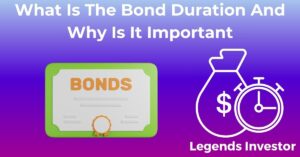Introduction to Inflation and Bond Markets: Navigating the Complex Relationship
Bonds are a fundamental component of many investment portfolios, offering stability and income. However, their performance is closely tied to various economic factors, including inflation. Understanding how inflation impacts bond markets is crucial for making informed investment decisions. This article explores the intricacies of inflation, how it affects bond prices, and strategies to navigate these challenges.
Explanation of What Bonds Are and Why They Matter in Personal Investing
What Are Bonds?
Bonds are debt securities issued by governments, corporations, or other entities to raise capital. When you buy a bond, you are essentially lending money to the issuer in exchange for regular interest payments and the return of the principal amount at maturity. Bonds are considered a fixed-income investment because they provide predictable income through interest payments.
Why Bonds Matter
Bonds play a vital role in personal investing by offering a steady income stream and diversifying investment portfolios. They are less volatile than stocks and can provide a stable return, making them an essential component for risk management and achieving financial goals.
How Bond Prices Are Impacted by Economic Factors
Bond prices are influenced by various economic factors, including interest rates, inflation, and economic growth. Changes in these factors can affect bond yields and prices, impacting the overall return on bond investments.
The Importance of Understanding Inflation’s Role in Bond Valuations
Defining Inflation and Its Economic Implications
Inflation is the rate at which the general level of prices for goods and services rises, eroding purchasing power. It reflects the decrease in the value of money over time. Inflation affects the cost of living and can impact investment returns, particularly in fixed-income securities like bonds.
How Inflation Is Measured and Reported
Inflation is commonly measured using indices such as the Consumer Price Index (CPI) and the Producer Price Index (PPI). These indices track changes in the prices of a basket of goods and services over time. Central banks and economic analysts use these metrics to assess inflation trends and make policy decisions.
Inflation’s Historical Impact on Markets
Historically, inflation has had a significant impact on financial markets. High inflation periods, such as during the 1970s, often lead to increased interest rates and market volatility. Understanding these historical patterns can provide insights into how inflation might affect bond investments today.
The Intricacies of Bond Prices
Basic Components Influencing Bond Prices
- Interest Rates: Bond prices have an inverse relationship with interest rates. When interest rates rise, bond prices fall, and vice versa.
- Coupon Rates: The fixed interest payments made to bondholders. Higher coupon rates generally lead to higher bond prices.
- Yield: The return on a bond investment, influenced by its price and interest payments. Yield and price have an inverse relationship.
The Relationship Between Bond Prices and Their Yields
Bond prices and yields are inversely related. When bond prices rise, yields fall, and when prices fall, yields rise. This relationship is crucial for understanding how interest rate changes affect bond investments.
Duration and Maturity Considerations in Bond Pricing
Duration measures a bond’s sensitivity to interest rate changes. Longer-duration bonds are more sensitive to interest rate changes than shorter-duration bonds. Similarly, the maturity of a bond affects its price volatility, with longer maturities generally exhibiting greater sensitivity to economic changes.
Inflation’s Direct Impact on Bonds
How Rising Inflation Typically Leads to Falling Bond Prices
Rising inflation erodes the purchasing power of the fixed interest payments provided by bonds. As inflation increases, the real value of these payments decreases, leading to a decline in bond prices. Investors may demand higher yields to compensate for the reduced purchasing power, further driving down bond prices.
The Inverse Relationship Between Inflation and the Real Rate of Return
The real rate of return is the nominal return minus inflation. When inflation rises, the real rate of return on bonds decreases, affecting their attractiveness to investors. This inverse relationship highlights the impact of inflation on bond investment returns.
Why Long-Term Bonds Are More Sensitive to Inflation
Long-term bonds are more sensitive to inflation because their fixed interest payments are received over a more extended period. The longer the bond’s duration, the greater the impact of inflation on its real value and price volatility.
Central Bank Policies and the Bond Market
The Role of Central Banks in Controlling Inflation
Central banks, such as the Federal Reserve, play a crucial role in managing inflation through monetary policy. They use tools like interest rate adjustments and open market operations to influence inflation rates and stabilize the economy.
Interest Rate Decisions and Their Immediate Effect on Bond Prices
When central banks raise interest rates to combat inflation, bond prices typically fall. Higher interest rates make newly issued bonds more attractive, leading to a decrease in the price of existing bonds with lower coupon rates.
Quantitative Easing or Tightening and Bond Market Reactions
Quantitative easing (QE) involves central banks purchasing government bonds to increase money supply and lower interest rates. Conversely, quantitative tightening (QT) involves selling bonds to reduce money supply and raise interest rates. Both QE and QT can significantly impact bond prices and market liquidity.
Economic Conditions and Market Sentiment
The Impact of Economic Indicators on Investor Confidence
Economic indicators, such as GDP growth, unemployment rates, and consumer confidence, can influence investor sentiment and bond market performance. Positive economic conditions may lead to higher interest rates and lower bond prices, while economic uncertainty can drive investors toward safer assets.
Recessionary Pressures and the Flight to Quality
During economic downturns, investors often seek safe-haven assets like government bonds, leading to a flight to quality. This increased demand for high-quality bonds can drive up prices and lower yields, providing stability during periods of economic stress.
Analyzing the Market’s Inflation Expectations
Market expectations of future inflation play a crucial role in bond pricing. Investors use inflation-protected securities, such as Treasury Inflation-Protected Securities (TIPS), to hedge against anticipated inflation. Analyzing these expectations can provide insights into future bond market movements.
Investment Strategies During High Inflation
Adjusting Bond Portfolios in Anticipation of Inflation
To manage inflation risk, investors may adjust their bond portfolios by incorporating shorter-duration bonds or inflation-protected securities. This approach helps mitigate the impact of rising inflation on bond prices and returns.
Inflation-Protected Securities as a Hedge
Inflation-protected securities, like TIPS, provide a hedge against inflation by adjusting their principal value based on changes in the Consumer Price Index. These securities help preserve purchasing power and provide a real rate of return in an inflationary environment.
Diversification Tactics to Mitigate Inflation Risk
Diversification across different asset classes, such as stocks, real estate, and commodities, can help mitigate inflation risk. A well-diversified portfolio can provide stability and reduce the impact of inflation on overall investment returns.
Understanding Inflation Risk and Credit Risk
Balancing the Impact of Inflation Risk Versus Credit Risk
Inflation risk and credit risk are two critical factors in bond investing. Inflation risk affects the real value of bond returns, while credit risk relates to the issuer’s ability to meet its debt obligations. Balancing these risks involves evaluating the creditworthiness of issuers and considering inflation-protected investments.
Credit Ratings, Bond Yields, and Inflation Expectations
Credit ratings impact bond yields, with higher-rated bonds offering lower yields and lower-rated bonds offering higher yields. Inflation expectations can influence credit spreads, affecting the relative attractiveness of different bonds in the market.
Assessing the Real Value of Returns After Inflation
Investors should assess the real value of bond returns by adjusting nominal returns for inflation. This analysis provides a clearer picture of the actual purchasing power of bond income and helps in making informed investment decisions.
Conclusion: Navigating Bond Investments Amidst Inflation and Economic Shifts
Recap of Inflation’s Influence on Bond Investments
Inflation plays a significant role in bond markets, affecting bond prices, yields, and investment returns. Understanding the impact of inflation is essential for managing bond investments and making informed decisions.
Emphasizing the Importance of Staying Informed and Agile
Investors should stay informed about economic conditions, inflation trends, and central bank policies to navigate the complexities of bond investing. Being agile and adjusting investment strategies in response to economic shifts can help optimize returns and manage risk.
Encouragement to Seek Professional Financial Advice for Individual Circumstances
Consulting with a financial advisor can provide personalized guidance on managing bond investments amid inflation and economic changes. Professional advice helps in crafting a strategy that aligns with individual financial goals and risk tolerance



